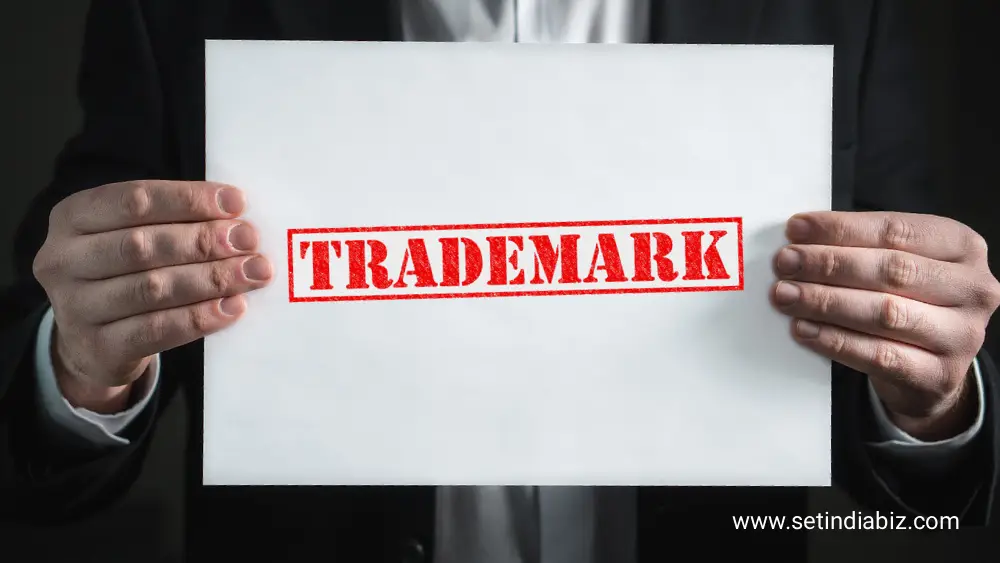Types of Trademarks in India
Overview : A trademark is used to denote the origin of a business’s brand. There are different types of Trademarks in India that help in detecting the quality and origin of a product, or service, thereby preventing confusion among customers for recognizing a brand. It is used to create an identity for the business that makes it stand out differently from its competitors and helps increase consumer loyalty. Read this blog to thoroughly understand the different types of trademarks in detail.
In this competitive business environment, protecting a business’ specific identities has become the need of the hour. Such specific identities include business name, logo, any other specific design, mark or word of identification that gives it distinctive identity from its other competitors. Any symbol, word, design or logo can be protected through trademark registration.
If a business has multiple trademarks representing it, a different application needs to be filed separately for each of them. For example, say a business wants to get its brand name and logo both protected under trademark, it will then have to file separate applications for Trademark Registration of its brand name and logo.
What is a Trademark?
The Indian Trademark Act, 1999 under Section 2 (zb) defines a trademark as a vital Intellectual Property that marks and distinguishes products/services from others using a recognizable symbol, design, or expression. Any legal entity i.e. individual, or business, can own a trademark.
Anyone who wants to use a brand name for business purposes must file for a trademark registration for the same and get it done properly. This registration legally binds others for not using the same name for their brand, or products/services. Trademark registration of your brand name, logo, or any special identity marks it as your intellectual property that can’t be utilized by others.
Types of Trademarks in India
The purpose of different types of trademark registration is to assure distinction of a business, product/service and make its source, owner, or producer recognizable. When it comes to the types of trademarks in India, an individual or entity has a large variety to choose from including name, logo, shape, design, tagline, etc. However, using an existing mark is prohibited. Soft drink firms, for example, are not permitted to use Coca-Cola-like logos or names for their products.

Different types of trademark in India
Word Marks
This type of trademark includes one or more words, letters, numerals or anything written in standard character like brand name , slogan , tagline.In simple words where one wants to register only the letters, words or combination of words or numerals without any artistic and pictorial representation can register the trade under word mark category. Flexibility is the biggest benefit that the word mark provides as after the registration of the mark; it can be used in any design, style and font. Some good examples of this type of trademarks are Microsoft, Tata, KFC, IBM.
Device marks
It is one of its own types of trademark that includes any label, sticker, monogram, logo or any geometrical figure with or without word element in it. Device marks may also include colors but if the registration is made along with colors then the same combination of colors have to be used to claim trademark protection.
Device marks are eye-catching and attractive which makes it easy for the public to remember. When unique devices are used it helps in recognition of the business because people may not remember the name but they can easily remember the logo. The Apple logo is a good example of device mark.
Sound Mark
Sound marks are features acquired by hearing and characterized by their unique sound. It is a type of trademark where sound is used to perform the trademark function of uniquely distinguishing the commercial source of products or goods and services.
According to the new provision the sound submitted should be in MP3 format and it should not exceed 30 seconds of length and visual representation of the sound notations.YAHOO was the first company to register a sound trademark across the globe.In India ICICI bank was the first to register sound as a trademark.Some of the registered sound marks in India are:
- Yahoo – (Human voice yodelling Yahoo)
- National Stock Exchange – (Theme song)
- ICICI Bank – (Corporate jingle – Dhin Chik Dhin Chik)
- Britannia Industries (Four note bell sound)
- Cisco – (Tune heard on logging in to the conferencing service Web Ex)
- Edgar Rice Burroughs – (Tarzan Yell by its toy action figure)
- Nokia – (Guitar notes on switching on the device)
Three dimensional trademark
It includes both shapes of goods or packaging.It is a non-conventional trademark and to get its registered the shape of goods or its packaging must be distinctively different from the competitors in the market and is enough for the public to recognise the origin of the goods , without the aid of other word marks on it.In simple words it must be able to perform the function of the trademark.
Color Trademark
Trademark act permits registration of combination of colors to represent the goods and services.When the distinctiveness is claimed in the combination of colors with or without device it is called color mark.In trademark law the color could be considered to acquire distinctiveness when the purchasing public recognises the product or brand by particular combination of color only.In this case the brand is the color.
According to section 10 of the Trademark Act,1999, Colour trademark can be of a single color or combination of colors, but Section 2(1)(m) of the Trademarks Act, 1999 requires a mark to be a ‘combination of colors’ shows the intention of the legislature to not allow single-color trademarks.Thus it is suggestible to file for a combination of colors as a trademark but where a trade mark is registered without limitation of color, it shall be deemed to be registered for all colors.Smell Marks
When the smell is distinctive and cannot be mistaken for another product, a smell mark can be recognized. Consider perfumes.
Shape of goods
Trademarks can be registered in shape or goods if they have a distinctive shape. But it cannot be registered if the -Shape of goods which results from the nature of goods themselves; Shape of goods which is necessary to obtain a technical result; Shape of goods, which gives substantial value to the goods.
Shape of goods are also non conventional types of trademarks. In a nutshell, Consumer recognition and acquired distinctiveness becomes an important factor in granting a non-conventional trademark like Shape of goods, 3-dimensional trademark, sound mark, smell mark. In granting registration of the non-conventional trademark the Registry needs to evaluate the balance of convenience of the Applicant of the mark with the other traders who may be using elements of such trademarks in good faith.
Selection of Brands and its overview
Not all brands are alike. Some brand names have greater impact than others. Your brand’s place on the so-called ‘spectrum of distinctiveness’ defines this. Trademarks ranging from generic and descriptive to suggestive, arbitrary, and fanciful. Let’s understand better the notions of uniqueness so that any individual or a business entity can select a strong brand for their future goods and services or determine whether the present brand is inherently strong.
- Generic Mark: The Generic mark, is considered as the brand’s weakest form as it refers to the class of product or services. A brand becomes generic once it enjoys immense popularity and widespread recognition and the consuming public starts recognising the class of product and services with the brand itself and it loses its connection with the company that first or originally created it.
In most cases, it is just a generic phrase that everyone uses to refer to a certain product or service that you offer. Some brands start as ordinary brands and then become generic as they are utilized as band aid.
- Descriptive Mark: The trademark in this category no longer refers to goods and services by the common word but they refer to characteristics of a product or its quality.
You may seek the registration in descriptive marks by illustrating that your brand has earned distinctiveness, that is, you can show that when people hear or see your brand, they think of your products or services, not just any product or service with particular features.
Brands with descriptive types of trademarks have a significant market reach, allowing them to become acceptable trademarks for their owners. Some examples of such type of trademark include KFC, American Airlines, Whirlpool, Louis Vuitton, and Pepsi.
- Suggestive Mark: They outperform generic and descriptive marks together. This type of mark provides suggestions to the consumer to connect with products or services. They make considerably more precise references to the traits and characteristics of the goods and services. Good example of this type of trademark is the telephone logo of Whatsapp LLC.
- Arbitrary Mark: Arbitrary marks are dictionary phrases used to categorize goods and services that have nothing to do with the words themselves. The most well-known examples are ‘Apple’ and ‘Adobe.’In layman’s language, arbitrary markings are seen as essentially effective marks because they have nothing to do with the goods or services they are meant to represent.
- Fanciful Mark: Finally, these marks are defined coin words or coined terms that have no meaning other than to indicate certain items or services and has never been used for product or services KODAK, for example, denotes nothing more than a photography brand; similarly, Twitter denotes nothing more than the name of a social media platform. More examples are available to help you understand. Walmart, Pepsi, Marlboro, Audi, and Ola, uber are all excellent examples of fanciful marks.
Companies and Trademark experts should use aforementioned types of trademarks depending on their business nature as well as requirement. If you want to create a new brand, your brand objective should reflect from your products or services.
Opting for a trademark registration allows you to call your own brand instead of choosing a generic or non-relative word/symbol as your trademark.
Conclusion
If you wish to find the best trademark registration for your organization, you should do extensive research and may also need professional assistance. Having in-depth know-how of different types of trademark registration can play a key role in protecting your brand's identity and its distinctiveness. Protect your Intellectual property against any sort of infringement by giving it a strong protection of trademark through availing professional trademark registration in India.
FAQ's
A good trademark should have the following qualities;
- must be distinctive & reflect industry similarity
- easy to spell, pronounce & remember
- not include laudatory word/words i.e best, perfect, etc
- should not be long or descriptive
No, it’s not necessary to register a trademark in India. However, opting for trademark registration can have multiple benefits.
Several benefits of various types of trademark registration are as below;
- identifies the origin of goods/services
- helps in advertisement of goods/services
- protects the commercial goodwill of a trader
- protects less educated consumers from buying cheaper alternative or second-rate quality products
The below-listed marks can be registered under the Indian trademark law;
- Invented/Coined Words
- Combination of Colors
- Shape of Goods excluding natural shapes
- Sound Marks
The Indian trademark law allows a 3-d mark to be registered as a trademark in India.
Author Bio

Editorial Team | in
Setindiabiz Editorial Team is a multidisciplinary collective of Chartered Accountants, Company Secretaries, and Advocates offering authoritative insights on India’s regulatory and business landscape. With decades of experience in compliance, taxation, and advisory, they empower entrepreneurs and enterprises to make informed decisions.
